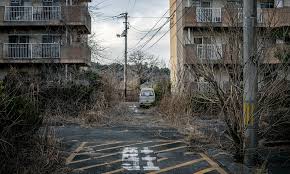The Fukushima Nuclear Disaster
On March 11, 2011, Japan experienced one of the worst natural disasters in its history—a magnitude 9.0 earthquake that triggered a massive tsunami. The tsunami waves, reaching heights of up to 40 meters, devastated coastal regions and overwhelmed the Fukushima Daiichi Nuclear Power Plant.
The plant lost power and its cooling systems failed, leading to core meltdowns in three reactors. Hydrogen explosions followed, releasing radioactive materials into the atmosphere and ocean, marking the worst nuclear accident since Chernobyl.
Impact and Evacuations
Following the disaster, the Japanese government declared a 20-kilometer exclusion zone around the plant, displacing over 150,000 residents. Many fled their homes with little time to collect belongings, expecting to return within days, but many areas remained closed for years.
Although no direct deaths from radiation exposure were reported, the evacuation process caused immense psychological and economic hardships. Many displaced residents suffered from post-traumatic stress disorder (PTSD), depression, and social isolation.
Environmental Consequences
Radiation spread through air, soil, and water. Contaminated water from the plant leaked into the Pacific Ocean, raising concerns about marine ecosystems and seafood safety. Authorities implemented decontamination efforts, including removing topsoil and washing buildings in affected regions.
While some areas have been reopened, long-term monitoring continues, especially for radioactive isotopes like cesium-137, which has a half-life of 30 years.
Recovery and Lessons Learned
The Fukushima disaster reshaped Japan’s nuclear policy. The country temporarily shut down all of its nuclear plants for safety inspections, leading to an increased reliance on fossil fuels. New regulations were introduced to improve reactor resilience against natural disasters.
Recovery efforts include the construction of the world’s largest ice wall to prevent radioactive water leakage, as well as extensive soil decontamination. Some residents have returned to previously restricted areas, but concerns over food safety and radiation exposure persist.
Conclusion
A decade later, Fukushima stands as a testament to both human resilience and the challenges of nuclear energy. While significant progress has been made in decontamination and reconstruction, the psychological, social, and environmental effects of the disaster remain.
The Fukushima disaster underscores the need for stringent nuclear safety measures, better emergency preparedness, and a sustainable energy future.

